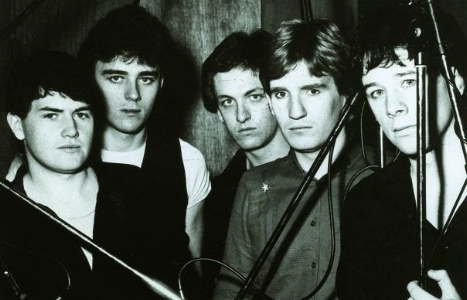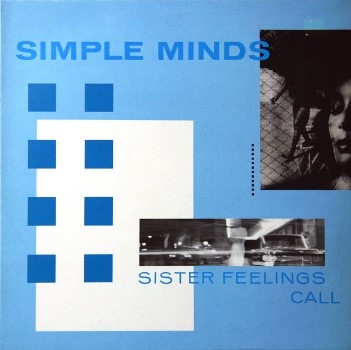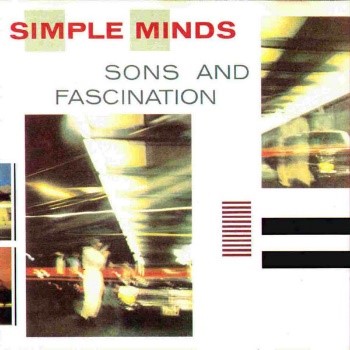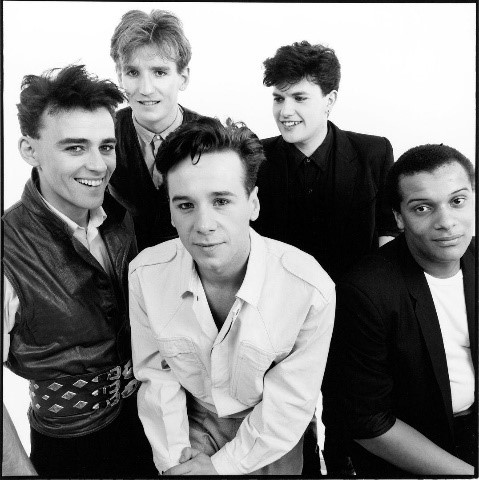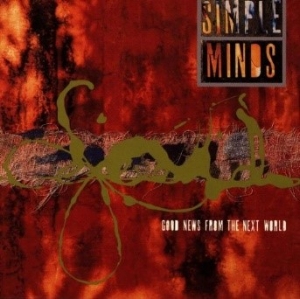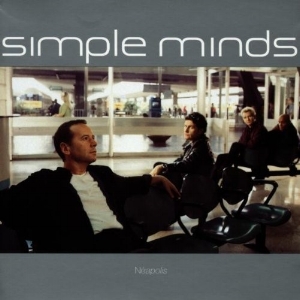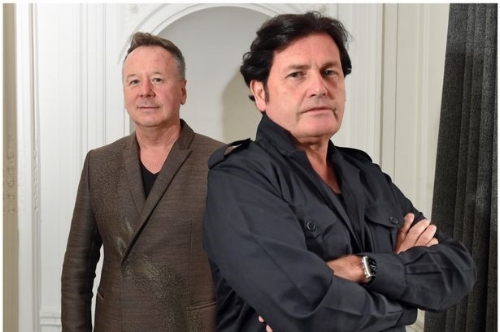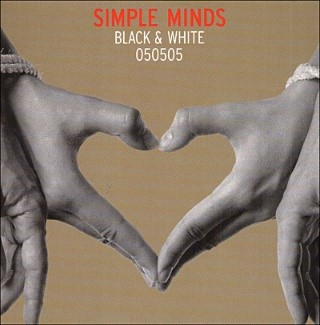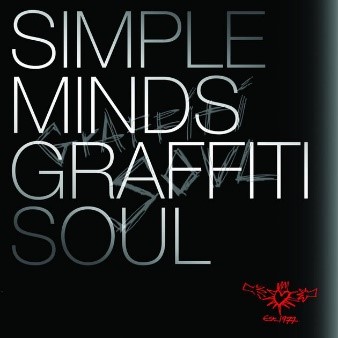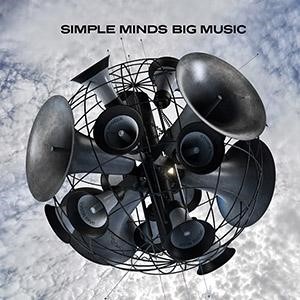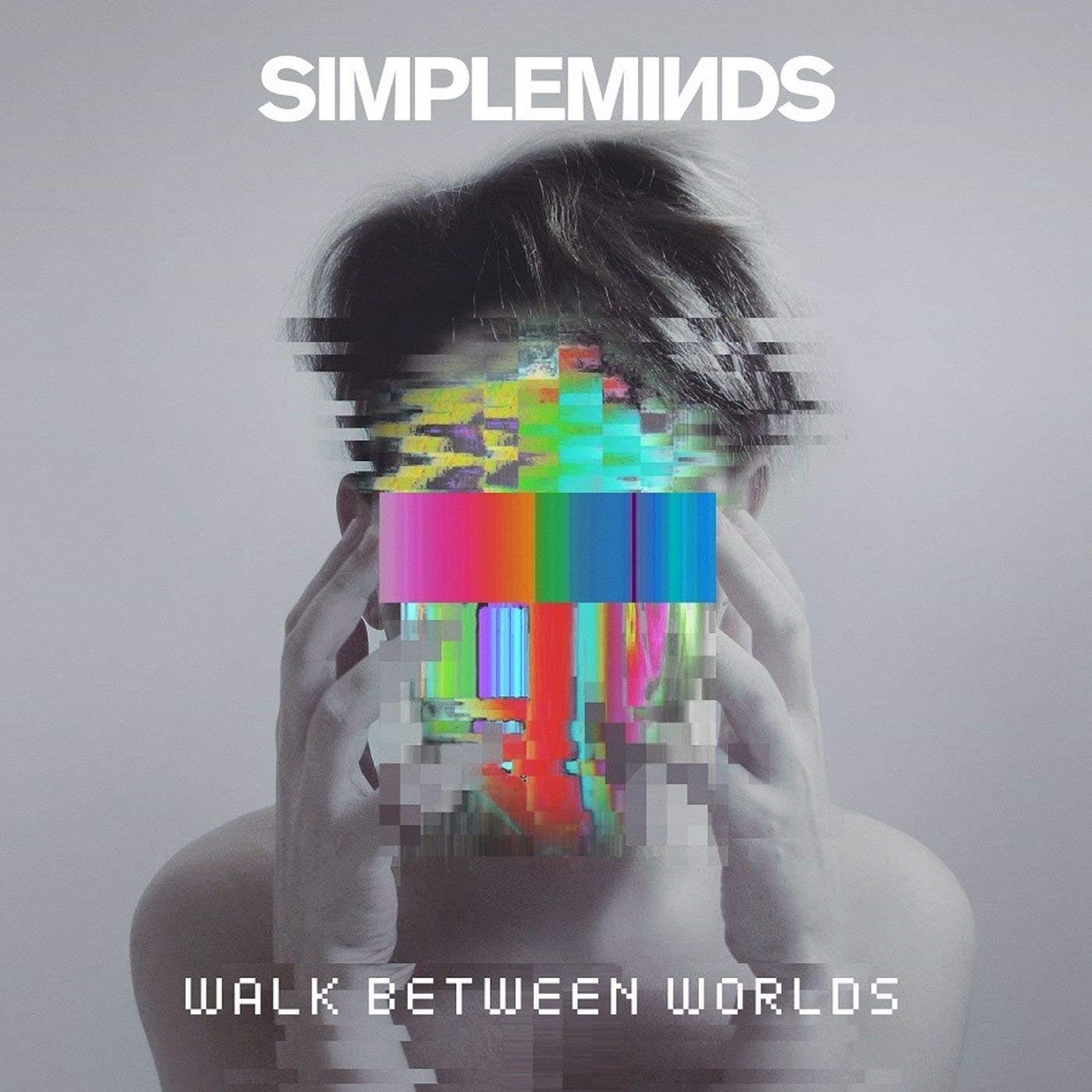Alive and Kicking: A Simple Minds Retrospective
Listen to the playlist on the streaming service of your choice.
Simple Minds is an enigma. I don’t know if there are many bands that scaled the heights they did only to slide down into relative obscurity, but still soldier on undaunted (mostly). A few years ago, I heard they’d released an album and was shocked to learn it was their seventeenth – only to be followed by two more in the years after, including one this year in which they’re now on tour. I was shocked since I hadn’t given them a thought in almost thirty years and hadn’t come across any sign of them in the interregnum. So this Retro is to celebrate their music and accomplishments and check out what they’ve been doing for the past thirty years.
The Playlist
Someone
Changeling
I Travel
The American
Love Song
Someone, Somewhere, In Summertime
Promised You a Miracle
New Gold Dream ('81, '82, '83, '84)
Glittering Prize
Up on the Catwalk
Speed Your Love to Me
Waterfront
Don't You (Forget About Me)
All the Things She Said
Alive and Kicking
Sanctify Yourself
Kick It In
See the Lights
Great Leap Forward
Glitterball
Cry
Jeweller to the Stars
Home
Stars will Lead the Way
Blindfolded
Chelsea Girl (acoustic)
Summer
Sometime in the early ‘80s my mom was driving me to one of my hockey games and we were listening to the radio. The DJ asked a contest question to win tickets to an upcoming show, “Where do simple minds come from?” My mom and I looked at each other with a frown, is that a trick question? The winning caller identified that Simple Minds come from Glasgow, Scotland, to which my mom and I commented, “well, that’s rather unfair to the people of Glasgow.” Of course, a song was played and we learned this was not a general comment on the cognitive capabilities of Glaswegians, and thus my introduction to this band and their budding success in North America.
Someone \ Life in A Day (1979)
Recruited by John Milarky into the punk band ‘Johnny and the Self-Abusers’ in 1977, vocalist and keyboardist Jim Kerr and guitarist Charlie Burchill, friends since childhood, then recruited additional school friends Brian McGee to play drums and Tony Donald on bass. Just as the band established itself among the Glasgow pub scene and got to releasing their first single, the band split and the four friends stayed together, renaming themselves Simple Minds, taken from the David Bowie lyric from Jean Genie, “He's so simple-minded, he can't drive his module / He bites on the neon and sleeps in a capsule / Loves to be loved, loves to be loved.” A prescient source.
Over 1978 there were a few line-up changes with Donald leaving, replaced by Derek Forbes on bass, and Mick MacNeill taking over on keyboards (leaving Kerr to focus solely on vocals). The band was a bit of a Glam act, wearing make-up and adjusting their sound away from the punk edge of Johnny and the Self-Abusers. They were signed by Arista and released their first album in 1979, Life in A Day. It is a very solid album, with Glam styled songs like “Chelsea Girl” and “No Cure” (which was originally called “Cocteau Twins” when it was performed by Johnny and the Self-Abusers, a name picked up by locals Robin Guthrie and Elizabeth Fraser for their band name). There are also some pop songs and edgier, punk-styled songs as the band explored their capabilities and searched for their sound. “Someone,” the first track, showed the combination of these sounds.
Changeling \ Real to Real Cacophony (1979)
Perhaps sensing the changing styles of the time, the band moved noticeably towards a darker, moodier and more rhythmic approach for their second album, released the same year as their debut. There are long instrumental passages and experimental uses of timing and overdubs, with no songs standing out other than the single “Changeling,” a strong signal of where the band was headed. Embracing the New Wave style and smartly layering edgy guitars with fluid basslines and catchy synth riffs, it was a cool song. The band wouldn’t yet catch on as the album failed to chart in the UK (the first album had reached #30).
I Travel \ Empires and Dance (1980)
The third album blended the moody instrumentation into more traditional pop song structures and continued to evolve their New Wave pop style. Still heavily founded on the rhythm section with melodies set out by Kerr’s vocals and the synth, the album would gain some chart attention though had no breakthrough single. “I Travel” and “Celebrate” were released as singles but not well promoted – actually, the band had left Arista by the time the second single was issued. “I Travel” had more pace and pop sensibility than their prior work and fit well with the emerging New Wave scene. It definitely had that “I Feel Love” vibe to it that so many synth bands were copping from the Georgio Moroder/Donna Summer hit of 1977.
The American \ Sister Feelings Call (1981)
Love Song \ Sons and Fascination (1981)
Now on Virgin Records, Simple Minds released their next two albums on the same day. Sister Feelings Call was a bonus to Sons and Fascination at first before being issued on its own. The lead single though, “The American,” would be included on that bonus disc. It’s a more polished, larger, and impressive song than anything they’d released to that point. It also sounded like the Simple Minds we’d come to know over the coming years. You can hear how it built on the sounds of Empires and Dance but the interplay between guitar, synth, drums and bass were more intricate with each playing its own, important part to the overall sound. Kerr’s vocals were now front and centre too, with a booming chorus that leveraged his deep voice. It was the first single since their debut single, “Life in A Day,” to get on the charts, but only to #59.
“Love Song” would be the next single, and wow what a song. Riding an infectious bassline, shimmering synths, and scratchy guitar, the song caught an undeniable groove. It’s the kind of song you fall in love with on first listen. Purely New Wave, it was one of the leading examples of the era. It also got the band attention outside of the UK, reaching #38 in Canada, #17 in Australia, and #16 in Sweden. The album would go to #11 in the UK and crack the top ten in Sweden and New Zealand.
Someone, Somewhere, In Summertime; Promised You A Miracle; New Gold Dream (‘81, ‘82, ‘83, ‘84); Glittering Prize \ New Gold Dream (‘81, ‘82, ‘83, ‘84) (1982)
Drummer Brian McGee left after the prior albums and associated tours, eventually joining German band, Propaganda. He was first replaced with Kenny Hyslop, who provided the beats for “Promised You a Miracle,” before being replaced by Mike Ogletree, who played as the band developed the songs for the next album. He then handed the sticks over to Mel Gaynor, an experienced (at age 22) session player who could really pound the skins. Gaynor would play on most of the recordings for the album. All of this is worth noting as the sound of the band continued to evolve through these changes, and the importance of the drums to the sound was critical.
Their sixth album was hands down their crowning achievement. New Gold Dream is one of the best New Wave albums ever and one of the best releases of the 80s. I could go on at length about each song, singing its praises. It is a well-worn disc in my record collection.
The premise was roughly the same throughout, the brilliant and perfectly balanced elements they’d achieved in “Love Song” were now present in throughout the album. The keyboards, in particular, provided character and infinitely memorable hooks, almost making you forget this was a band that had mostly relied on drum and bass to that point. To find a single album with songs such as these four playlist selections was (and is) rare, and tends to obscure the greatness of the rest of the album due to their prominence.
The LP would reach #3 in the UK and the top ten in Australia, New Zealand, and Sweden. The three singles (the title track wasn’t released as a single except in Italy) didn’t crack the top ten in the UK but served to build the band’s reputation as a leading act at home and abroad. I imagine it was about this time that radio DJs started talking about where the band was from.
Up on the Catwalk; Speed Your Love to Me; Waterfront \ Sparkle in the Rain (1984)
Though not as captivating as its predecessor, Sparkle in the Rain was still a fantastic album and a very strong follow-up. It was also impressive that it was a very different sounding record. The synths faded to the back, Gaynor’s pounding beats come to the fore, and Kerr’s vocals got louder and vaster. The result was big, stadium-oriented songs that shifted the band’s sound away from New Wave and into pop and rock.
One reason for this change was Steve Lillywhite producing the album, who encouraged the band to write the songs together so the instruments and vocals worked in unity. This resulted in less nuanced and more powerful sounding arrangements and a loss of the beautiful intricacy of their prior arrangements (Lillywhite’s wife, the inimitable Kirsty MacColl, would perform on two songs on the album).
The other change was the rise of U2, who Simple Minds met while on tour in 1983 in Europe. Seeing U2’s album, War, reach #1 in the UK and #12 in the US the prior year by having moved to a more anthemic rock sound must have made an impression. Kerr denied this but the move in Simple Mind’s sound to a similar style was undeniable. Burchill has also often utilized a scratch style of play on his guitar, similar to U2’s Edge. The U2 comparison would dog the band for much of their career thereafter.
Kerr and Hynde
The band’s shift in sound paid off, no doubt also building on the success of their prior album it reached #1 in the UK and lofty spots on other charts around the world (only #69 in the US though). These three singles, fantastic as they are, failed to crack the top ten in the UK (“Waterfront” would reach #1 in New Zealand). Regardless, the band was undoubtedly gaining a larger audience and playing in larger venues. Kerr also made headlines with his marriage to Chrissie Hynde.
This was the album in which I first got into the band, playing it endlessly in the summer of 1984 with my friends (along with the newly discovered New Gold Dream). I also attended my first concerts as a young teenager – three in a single week. I first saw The Psychedelic Furs with Talk Talk, then the next night Bruce Springsteen touring for Born in the USA, and then two nights later Simple Minds with The Tenants at Kingswood Music Theatre at Canada’s Wonderland. I have to admit after the wonder of the first two shows that poor Jim and the boys couldn’t equal the energy and rapture that the other acts had achieved. However, it was still a good show. It was also presented by rock station Q107 and the host DJ was booed when introducing the band, showing their core audience in Toronto were listeners of the free-form alternative station, CFNY. However, this was also a harbinger of where things were headed for this band, since they would be more comfortable on rock and pop stations than alternative ones going forward.
Don’t You (Forget About Me) \ The Breakfast Club Soundtrack (1985)
Five things about this, Simple Minds’ biggest song.
Firstly, this was a great song that continued the sound developed on Sparkle in the Rain but that also caught the stadium friendly sing-along element to capture a broader audience.
Second, it was curious that it wasn’t written by the band but by producer Keith Forsey and Steve Schiff (Nina Hagen Band) and Simple Minds had to be encouraged by their label and Chrissie Hynde to take it on.
Third, it was the last song to include bassist Derek Forbes, who had a falling out with the band and left, eventually joining Brian McGee in Propaganda.
Fourth, as the feature song from the John Hughes movie, The Breakfast Club, a huge success that year, it brought attention to the band like never before, pushing the song to #1 in the US and Canada and to top ten positions around the world. Interestingly, it only reached #7 in the UK, which was perhaps a telltale sign that the audience there wasn’t as with them on their sound change.
Lastly, it ruined Simple Minds, pushing them in a musical direction that lost their character, distinction, success, and the core audience developed over the first seven albums. It was the peak from which they would tumble.
All the Things She Said; Alive and Kicking; Sanctify Yourself \ Once Upon a Time (1985)
Admittedly, their demise wasn’t very apparent at first as they rode their new profile to success with their next couple of albums. Once Upon a Time unabashedly saw the band embracing the expansive, pop-rock format made for chant and repeat refrains in cavernous stadiums. “Alive and Kicking” was tailor-made for that and brought them another top ten hit in the US and another #7 spot in the UK. The album would reach #1 in the UK, their second in a row.
Other singles, “All the Things She Said,” “Sanctify Yourself,” and “Ghost Dancing” all did reasonably well and revealed the general consistency of the album. There was also the addition of backing, soul-styled vocals from Robin Clarke of Chic. This continued the band’s move to a more American music style – at least several years before U2 would do so with Rattle and Hum. This version of Simple Minds simply bore no resemblance to the band that had taken breaths away (mine at least) with their music just a few years prior. There were some structural similarities – “Love Song,” “The American,” and “Waterfront” had the expansive sound they now fully embraced – but there was nothing to compare the sublime brilliance of New Gold Dream.
Kick It In \ Street Fighting Years (1989)
After long tours promoting Once Upon a Time, the band released the next album a distant four years later. Somehow, I ended up with a cassette copy of this album (I certainly didn’t buy it) but I don’t think I played it more than once or twice. It’s a wretched album, lacking any hooks, intriguing or challenging music, or the enthralling instrumentation of the band’s prior LPs. It would be MacNeil’s last as keyboard player, Gaynor would be demoted back to a session player, and their replacement bassist left in the middle of the recording sessions. It was now just Kerr and Burchill, looking for a way forward.
The soul elements were abandoned for this album but not replaced with anything of note – leaving just a collection of anthemic songs shouting to no effect. There was a more political bent in the lyrics, a direction Kerr had been moving towards during the past albums and perhaps affected by his involvement in projects like Live Aid and support for the anti-Apartheid movement. This album would include songs about apartheid from an EP released just prior that including a cover of Peter Gabriel’s “Biko.”
Regardless my opinion (which can reliably sought to like things that won’t sell well), the UK press lauded the album and it reached #1 in the UK, making it three in a row for Kerr and Burchill. It wouldn’t do as well in the US, peaking at #70, while none of the three singles charted in the US or cracked the top ten in the UK. This would be the last I’d take any notice of Simple Minds and the last they’d make an impression on wider audiences.
See the Lights \ Real Life (1991)
Now a trio, with Gaynor on drums still in the mix, all the songs on this album were written by Kerr and Burchill. There was a sea change in music over the few years since their international success, and big sounding rock bands had been supplanted by retro sounds, electronics and stripped down, fuzzy, grunge acts. It’s remarkable how few of big acts from each of rock and pop’s decades survive into the next, and Simple Minds found themselves losing ground in the markets they’d cracked other than the UK.
This album, their ninth, revealed a more subdued and easier going Simple Minds. Some subtlety was re-introduced and the songs were more varied, though generally anchored in a traditional R&B style. Many songs would have sounded at home on a Sade album. The LP would reach #2 in the UK, ending their string of #1s, and only one of the four singles, “Let there Be Love,” would crack the top ten in the singles chart. It’s not a great album, but it was better than the last and it achieved the feat of getting Jim Kerr to stop yelling at the top of his lungs.
Great Leap Forward \ Good News from the Next World (1995)
Mel Gaynor left and the band was now a duo supported by a variety of session musicians. After a break they returned with their tenth album. The songs expanded a bit again but didn’t pursue the heightened passion of their late ‘80s work. More electronics entered the mix, making songs like the single, “Hypnotised,” reflect the then current sounds of Detroit or Manchester. However, this also meant the album lacked focus, and at this point it was not clear to me who Simple Minds was or what they were trying to achieve. The songs were listenable, recognizable R&B compositions competently played, and had pleasing melodies, but there was nothing about this album that grabbed you by the collar and said, ‘listen to me.’
Glitterball \ Néapolis (1998)
The band was released by its label after the prior album, but Kerr and Burchill still wrote songs and toured extensively, notably with the Proms Tour which partnered orchestras to pop music. By their return to the studio, now with Chrysalis, they had reunited with Mel Gaynor on drums (though he would end up only playing on one song on this LP, the single, “War Babies”), Derek Forbes on bass, and Brian McGee on keyboards (only for the rehearsals). It was almost a full reunion to the line-up of their creative heyday. The result was an album with heavier electronics, sounding once again a lot like U2’s music of that period. There were some interesting songs and experimentation with the electronics, but again no songs that brought you to the edge of your seat.
It would appear fans were taking notice. The album wouldn’t be released in the US and would only reach #19 in the UK, their first to not crack the top ten since the Sons and Fascination/Sister Feelings Call combo. Neither of the singles, “War Babies” and “Glitterball” would crack the top ten in the UK either.
Jim Kerr and Charlie Burchill
Cry \ Cry (2002)
Jeweller to the Stars \ Silver Box/Our Secrets Are the Same (2004)
The band started to record their next album, Our Secrets Are the Same, in 1999, during which Gaynor and Forbes were displaced by members of Kerr’s brother’s band, as well as other guests. This new lineup started to perform live as Simple Minds, leaving Gaynor and Forbes to wonder their fate as members (or not). Meanwhile as the recording industry was undergoing upheaval in the new age of file sharing, the band’s label, Chrysalis, was dealing with merger issues with EMI, which wouldn’t issue the now completed album and eventually dropped the band. To make matters worse, the album would be leaked onto the internet, a not uncommon event in the early days of online music. At this point Kerr and Burchill packed up and Kerr (who had split with Hynde back in ’90 and had also been married to actress Patsy Kensit for four years) retreated to Italy to run a hotel.
Kerr and Burchill would keep working together and playing around with ideas, and in Italy Kerr proved to be a sought-after collaborator, which encouraged him to keep working. Simple Minds signed with Eagle Records in 2001 and decided to kick things off with an album of cover songs, Neon Lights. The singles would be their takes on Patti Smith’s “Dancing Barefoot” and Pete Shelley’s “Homosapien.”
After releasing a greatest hits package, the band released their next LP, Cry, in 2002. The lineup was similar to that of Our Secrets Are the Same, though on tour they would have to recruit replacement players, which would include their old standby, Mel Gaynor. The Cry album was solid, with a notable return to smoother melodies and some acoustic pieces, a style rarely heard on Simple Minds’ albums. Perhaps it was the Italian influence, but there was a grace and depth to the music not heard before in their music. The songs invited you in rather than shouting you away. Kerr sounded like a singer and not a carnival barker, rediscovering his resonant voice for uses other than being heard over a cacophonous wall of sound. The title track was lovely, showing perhaps Kerr and Burchill had been listening to the likes of The Verve.
In 2004 a box set would be issued, Silver Box, which would include the full album, Our Secrets Are the Same, allowing songs like the lovely “Jeweller to the Stars” to be properly released.
Home \ Black & White 050505 (2005)
Stars Will Lead the Way \ Graffiti Soul (2009)
Where the hell has “Home” been for the past 25 years?! What a great song! If Kerr and Burchill can still pull something like this together, maybe there’s hope yet (the 2018 album will discourage this thought).
This song returned the band to alternative radio in the US despite not having been released there. The entire album, Black and White 050505 (a reference to its release date) was very listenable, with the duo having settled into a basic, R&B and pop style with a little retro-alternative edge at times, reminiscent of later music from Echo & The Bunnymen and, of course, U2. At various times Kerr even sounded like Bono. It is telling of this period for the band that the albums aren’t available on streaming services. I’ve had to go to YouTube in order to hear the whole albums.
2009’s Graffiti Soul was much the same. Again, there were fetching songs like “Stars Will Lead the Way,” helping the album to reach the top ten in the UK, their first to get that high since Good News from the Next World fourteen years earlier. The package in both vinyl and cd also included a second disc, Searching for the Lost Boys, which featured covers of bands such as Siouxsie & The Banshees, Magazine, The Stranglers, Nick Lowe, and Massive Attack.
Blindfolded \ Big Music (2014)
Chelsea Girl \ Acoustic (2016)
Summer \ Walk Between Worlds (2018)
Jim Kerr did a solo project in 2010 under the name ‘Lostboy!’ yet Simple Minds continues onward, mining their back catalogue with greatest hits and rarities releases, live albums, and with Kerr and Burchill joining with others to release new music. In 2014 there was Big Music, finally labelling their music by its ambition, and in 2016 an acoustic album of their past hits. “Chelsea Girl,” recall, was from their first album and sounds great with the stripped-down treatment. Big Music blends the band’s rock and pop with the ever-present flourishes to the outsized production for big venues. “Blindfolded” is another great song and sounds current, even it is really hard to tell it is Simple Minds. This year they’ve released their nineteenth album, Walk Between Worlds. Its not bad, but it’s not anything to generate excitement. It settles into the generic Simple Minds sound we’ve heard for the past thirty years, with some modern elements thrown in. It’s big, well-produced and has many good moments, but overall lacks a groove and personality to grab you and make you want to hear it over and over again.
This is the problem, for me at least. This band has lost all identity. The songs are generally solid, well written and performed well, with some experimentation and updating for the times. But there’s no signature sound or cohesive strain that ties them to their roots and any semblance of what the Simple Minds project has been about. This is perhaps an unfair comment, especially since the band has stuck to the basic R&B style for the past forty years despite ever-declining commercial success. Not that I expected them to stick to their early 80s style, it was a period that couldn’t be sustained without becoming a parody, but it’s still disappointing to witness the loss of creativity and style in their music in place of the dull, familiar bombast of arena rock. Their recent music blends electronics in the same ways their pre-eminent releases did, but listening to just a few seconds of their early albums compared to these recent efforts results in instant lament. I will forever encourage and support artists to continue producing and evolving – it is better than riding their past forever – but Simple Minds might have done better to retire the name at the end of the ‘80s and Kerr and Burchill could have continued under a different brand. Still, I put Simple Minds forward as an important and innovative act in the early years of modern rock, as brief and bright as that contribution was in the annals of their career.






